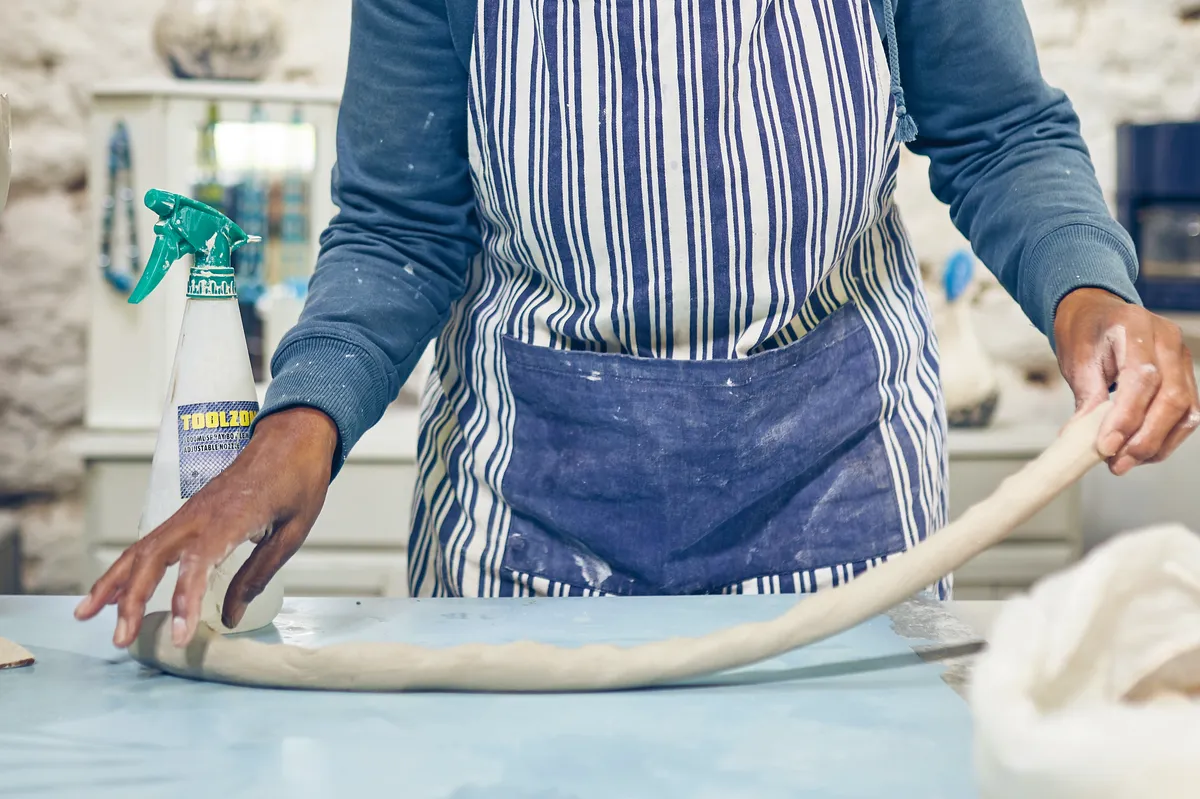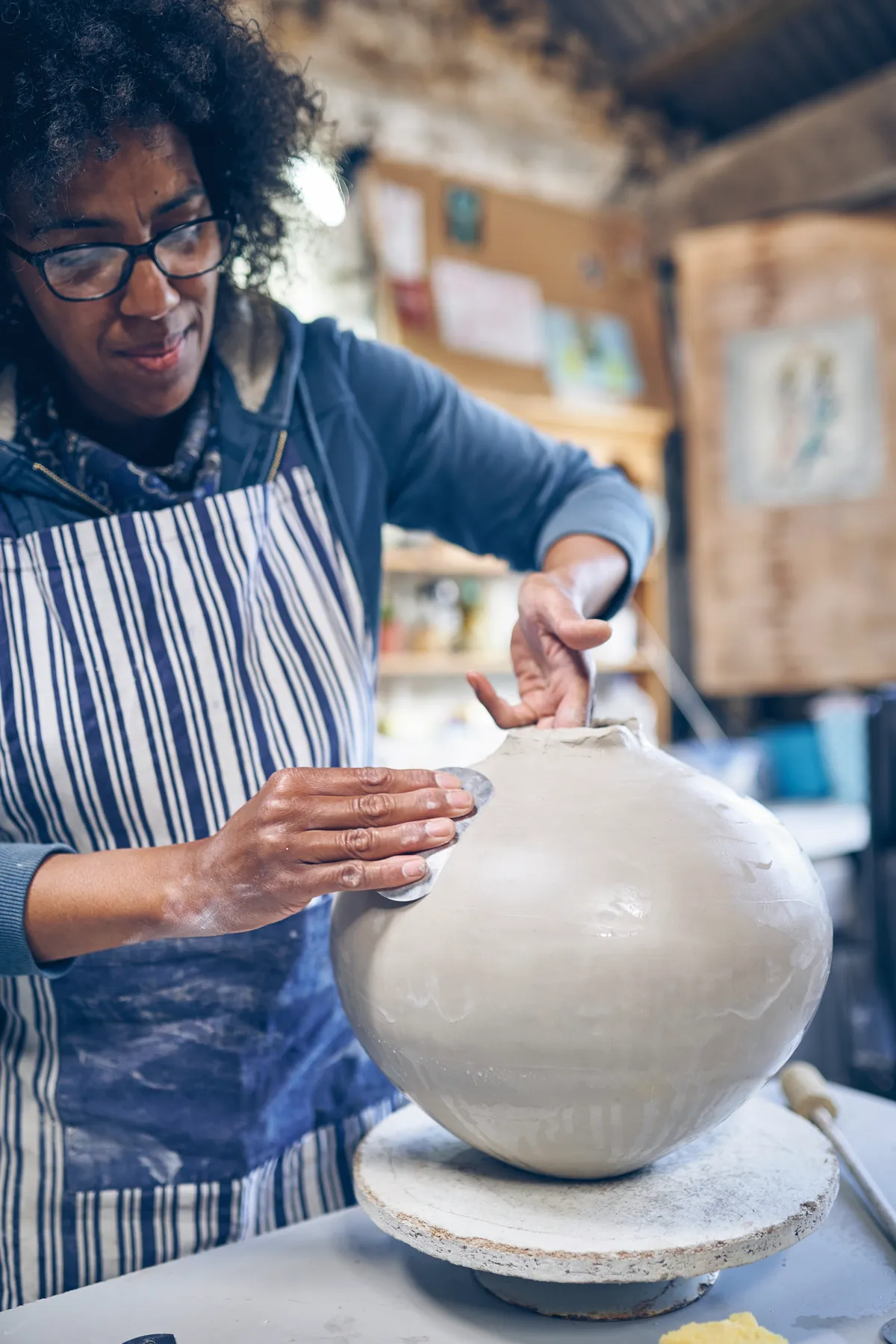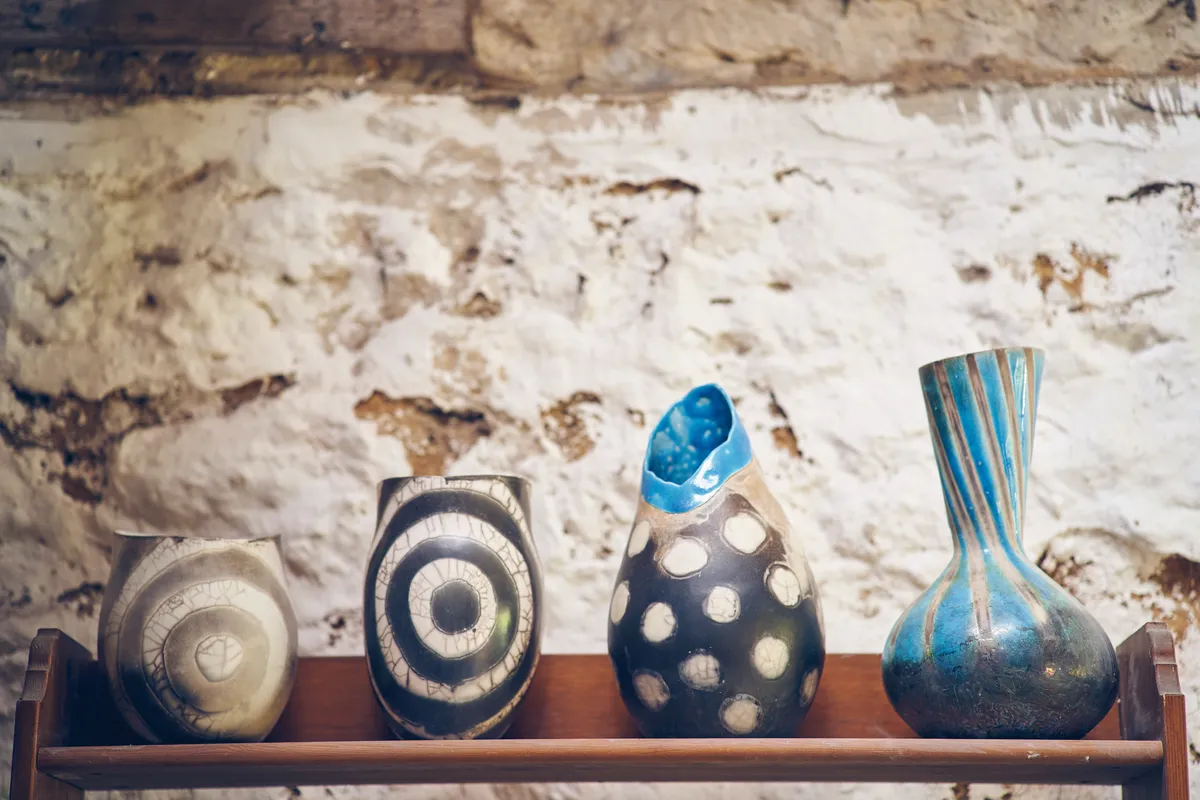The Cornish landscape is a huge source of inspiration to me: the turquoise tones of the sea, the rugged cliff faces and the vibrant hedgerows.
What’s your background? From the first time I made a coil pot I fell in love with ceramics – it made me feel a connection to my African ancestors. I went on to do a two-year Foundation course and then studied Ceramics at university in Wolverhampton. It was during my Foundation course that I discovered the art of Raku firing, when David Roberts [a leading practitioner of Raku pottery] gave a lecture on the subject.

What inspires you? I live in St Just, which is the most westerly town in Britain, and my studio is on a farm near St Buryan. The Cornish landscape is a huge source of inspiration to me: the turquoise tones of the sea, the rugged cliff faces and the vibrant hedgerows. I even love the wild weather, especially the strong winds and rolling sea mist.
Talk us through your process All of my pieces are made by hand using ancient hand-building techniques such as pinching and coiling. I start of by creating a pinch pot and then add coils of clay to slowly build up the shape, which is a really meditative process. I then burnish the surface to a smooth sheen using my favourite beach pebble and incise designs onto the pot before they dry to create defined areas of glaze. I also impress some pots with local flowers and leaves and build up areas of colour by splashing glaze onto the surface. My recent collections are all Raku-fired – an ancient Japanese technique originally used during traditional tea ceremonies. Glazed pieces are fired to around 950 degrees Celsius and carefully removed from the kiln while red hot. The cool air causes the glaze to crackle and the pots are then plunged into sawdust and smoked for 20 minutes. Once removed from the sawdust, cooled in water and carefully cleaned, the pots have a vibrant glaze and stunning dark areas.

Why do you choose to Raku fire your ceramics? Raku has an immediacy to it that is rare in ceramics. After the slow making process, the glaze firing is very quick. The kiln can reach temperature in less than an hour, so I’m able to build up a rhythm and do several firings in a day. The excitement of seeing how the pots emerge never fails to delight me!
What projects do you have on at the moment? I’m currently working towards two exhibitions that are happening in July 2018, one at The White Fox Gallery in Coldstream in the Scottish Borders and another at The Tayberry Gallery in Perth, Scotland. I’m also busy creating a new collection to exhibit at Breeze Art & Makers Fair in Penzance, near my home town, in September.

What are your future plans? I’m planning to spend some time creating a new collection for a solo show of my work. I’m very excited to create some new glazes and experiment with bolder shapes. It’s still in the developmental stages, but I feel incredibly inspired and I’m excited for the future of my ceramics!
See more of Catherine’s eye-catching ceramics at lucktaylorceramics.co.uk. Prices start from £35.
Images: Jesse Wild